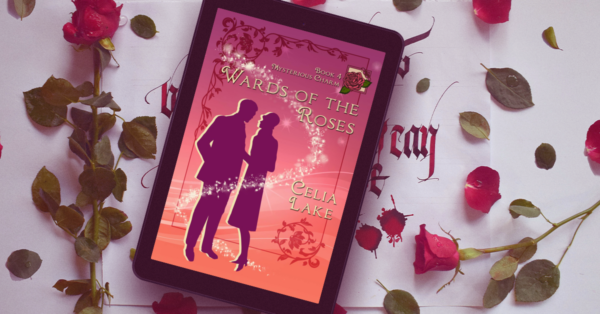Wards of the Roses remains my favourite title so far, given that I get to pun on the era, and on the walls of impenetrable roses around the manor house that’s central to the book.
I wanted to do several things with this book: write about the experience of blindness in the 1920s, talk about the creation of the Pact, and gesture at some of the forms of ritual magic in play both historically and during the time of the books.

Blindness in the 1920s
I have plans to do a post entirely about this, so I’m going to save the details for that. However, the 1920s were a particularly interesting time in the history of blindness.
Part of this is directly because of World War I. Damage from the new gas attacks, as well as injuries from bullets, shrapnel, and explosion, as well as better medical care that meant people did not die from initial injuries led to improvements in blindness rehabilitation.
People had previously been using four or five different methods of reading (embossed text, braille, Moon Type, among others). By 1919, the United States had standardised on a single form of braille (as the UK had a few years before that.)
Two things we associate with modern blindness – the long cane and guide dogs – both come directly out of the the 1920s and 1930s, thanks to various rehabilitation efforts. Both a lot more independent travel – the cane by giving a lot more information about what’s around you, and guide dogs because they can help make independent decisions about what’s going on that might be a risk.
(I’m quite sure Giles takes to a long cane with glee, and he has a guide dog by the mid-30s.)
So Giles is, at the time of the book, on the cusp of a number of these advances, but there are still a wide variety of tools in play, and learning to master them (or at least figure out which ones you wanted to use) was a key part of blindness rehabilitation work. For the record, St Dunstan’s was a real place, now Blind Veterans UK, and The Refuge was a magical equivalent, housing a small number of people at a time.
The one exception to the historical tools is magic duplicating later technology – Giles uses small charmed tokens to orient himself in rooms he uses often (like his home). Modern tech can do something similar, but this is something sympathetic magic would make pretty easy.
The Pact
Obviously, the Pact is a major part of the history of Albion. The Pact is the agreement Richard III made in 1484 with the Fatae that created some protections, and transferred responsibilities for certain magical rites from the King (or his chosen representative) to the Council.
This book only touches on some of the implications of that, but I wanted to write about the fact that not everyone thought this was a good idea. Change in the fundamental structures of your magical life is hard!
(For more about the Fatae, check out Seven Sisters, Fool’s Gold, and The Hare and The Oak.)
Ritual magic
I also wanted a glimpse at the more ritual-focused forms of magic, the kind of thing that involves arcane drawings on the ground in specially prepared chalk. A staple of the grimoire traditions of magic from the 15th and 16th centuries, there are lots of different forms. They often involve a number of calculations, picking a particular date, hour, even minute, and so on.
One of my basic principles in how magic works in Albion is that there are lots of ways to do magic, but not all of them are mutually compatible. And not all of them will work the way you hope they will, especially when you’re working toward the limits of their capacity. That’s before you get into whether the individual doing the magic is skilled, knowledgeable, or competent enough to do the thing they want to do (or sensible in their choices!)
Intrigued? Get your own copy of Wards of the Roses. You can find a bit more of Kate and Giles together in Country Manners, found in the Winter’s Charms novella collection, over the Christmas of 1921 between their engagement and marriage.
